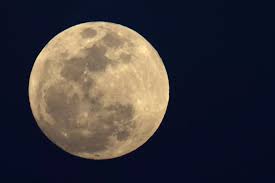Islamabad, May 14, 2025: Spanish technology innovator GMV has launched LUPIN, a groundbreaking navigation system for lunar missions that aims to revolutionize space exploration, making it as seamless as using GPS apps like Google Maps or Waze on Earth.
This technology is a part of a broader European Space Agency initiative to test novel positioning, navigation, and timing methods as lunar exploration experiences a resurgence due to scientific research, mining prospects, and the prospect of future tourism.
According to Steven Kay, the director of the LUPIN project, “With this software, we bring Europe closer to establishing a human presence on the moon, paving the way for Mars exploration and potential human habitation there.”
The ambitious goal of LUPIN is to create a real-time navigation system for lunar missions, making surface exploration more intuitive for astronauts and rovers alike.
Field trials of LUPIN were conducted in the volcanic landscapes of Fuerteventura, one of Spain’s Canary Islands, which resemble the moon’s surface in many ways.
GMV tested the prototype using simulated GPS signals from orbiting satellites, demonstrating how lunar navigation can be vastly improved by offering accurate location tracking in real-time.
At present, navigating the lunar surface is challenging due to reliance on complex calculations and data transmitted from Earth.
This method is not only slow but also lacks the precision needed for immediate decision-making.
GMV explained, “Communication depends on direct visibility with Earth or lunar relay satellites, resulting in communication delays and shadow zones that hinder decision-making.”
LUPIN aims to address these issues by integrating advanced lunar cartography with data from orbiting satellites that target hard-to-reach regions like the lunar south pole and the far side of the moon, which are often in shadow.
By combining this information, LUPIN can provide rovers and astronauts with precise, up-to-date mapping of the moon’s surface.
Mariella Graziano, GMV’s head of strategy, emphasized the importance of the technology, saying, “We want these rovers to map the surface of the moon efficiently and safely, enabling astronauts to establish permanent bases within the next few years.”
With growing interest in lunar missions, LUPIN is expected to play a pivotal role in facilitating sustainable human exploration of the moon and beyond, making it an exciting leap toward future space endeavors.
Read More: Islamabad Flights Resume After Disruptions
As we stand on the edge of this new era in space exploration, it’s clear that LUPIN could be a crucial tool in unlocking the mysteries of the moon—and beyond. Keep an eye on the developments in this field as humanity inches closer to becoming an interplanetary species.









